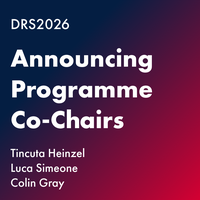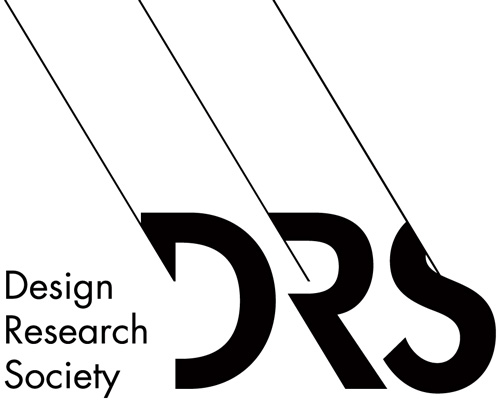
The DRS2026 conference team is pleased to announce the appointment of our three Programme Co-Chairs: Tincuta Heinzel, Luca Simeone and Colin Michael Gray. Continue reading to learn more about each of our co-chairs, what a Programme Chair does, and how you can get involved in the conference.
Can you introduce yourselves and your roles in the DRS?
Tincuta Heinzel (TH): I am an Associate Professor (Senior Lecturer) at Loughborough University, UK, where I teach and conduct research in textile design, design theory, interaction and industrial design, as well as user experience. Since 2022, I have been an elected member of the IAC, and since 2023, I have served as the convenor of the Interdisciplinary Textiles Design Research Special Interest Group (SIG). I was also the General Chair of the Textile Intersections conferences held in 2019 and 2023.
Luca Simeone (LS): I typically spend my days teaching and researching at the intersection of design and management studies. I'm based in Sweden and I work in Denmark (at Aalborg University). I've been a DRS member for a few years and currently serve as one of the convenors of the SIG Designing Change and a member of the International Advisory Council.
Colin Michael Gray (CMG): I am an Associate Professor and Program Director of Human-Computer Interaction Design at Indiana University Bloomington. I have been involved with DRS since 2014, was elected to the IAC in 2022 and elected to the DRS Executive Board in 2023. I was also the Program Chair for the DRS 2024 conference in Boston.
What does a Programme Co-Chair do?
TH: The role is multifaceted. For DRS 2026, alongside my fellow Programme Co-Chairs—Luca Simeone and Colin Michael Gray—and the Local Chair, Arno Verhoeven, we are responsible for overseeing the overall organisation of the conference. In addition to selecting track proposals, the programme will feature a PhD Community Day, a series of Conversations and Explorations events, and an exhibition. Our goal is to support the design research community by curating and bringing together the most relevant and thought-provoking perspectives in the field. We aim to foster engaging dialogues around the most pressing and timely issues in design research today for both the designers community, but also for the local and broader design beneficiaries.
LS: This year, we have the good fortune of having three Programme Co-Chairs. Each of us might have a slightly different take on this role. One of the aspects that intrigues me the most is that a Programme Chair acts as a facilitator: many people will contribute to the conference (e.g. by writing papers, hosting conversations, organizing workshops, etc.) and the Programme Chair will have to weave threads across all these contributions, making sure that the conference experience is meaningful and rewarding for the participants.
CMG: I am very excited to see the program chair role evolve to meet the rapid growth of the design research community! Having done this alone for the 2024 conference, the co-chair arrangement will allow us to address the wide range of tasks that are involved with a conference at the scale of DRS: from convening and supporting theme track chairs to recruiting reviewers to ensuring consistency and objectivity in review procedures to forming final conference paper sessions. I will also be providing support and documentation of some of the key aspects of the role to ensure the rigor and diversity of the ultimate 2026 conference program.
What are you looking forward to in your roles?
TH: DRS 2026 marks the 60th anniversary of the Design Research Society, and it is both an honour and a significant responsibility to serve as one of the Programme Chairs for this milestone event. Together with my colleagues, we will not only reflect on the evolution of design research over the past six decades, but also look ahead—drawing inspiration from the discussions, debates, and innovative ideas that will emerge throughout the conference.
LS: These days, we are reviewing track proposals. We have received so many inspiring proposals, and reading and commenting on all these contributions is a real privilege.
CMG: I am looking forward to being surprised—once again—at the reach and diversity of design research. Our theme track call resulted in a record number of submissions (more than 100!) and this diverse range of research subjects and areas of focus brings much excitement for the next conference.
What are the different ways people can get involved in the conference?
TH: The call for tracks ended earlier this month. We are now preparing a series of calls for papers, for conversations and explorations, for the involvement in the PhD community day. Together with the local partners we will host some other events.
LS: We'll launch our call for papers in the coming weeks. Later in the fall, we'll issue additional calls for design researchers and practitioners interested in hosting conversations or facilitating interactive, hands-on sessions.
CMG: +1 for reviewers and interest by paper authors!
